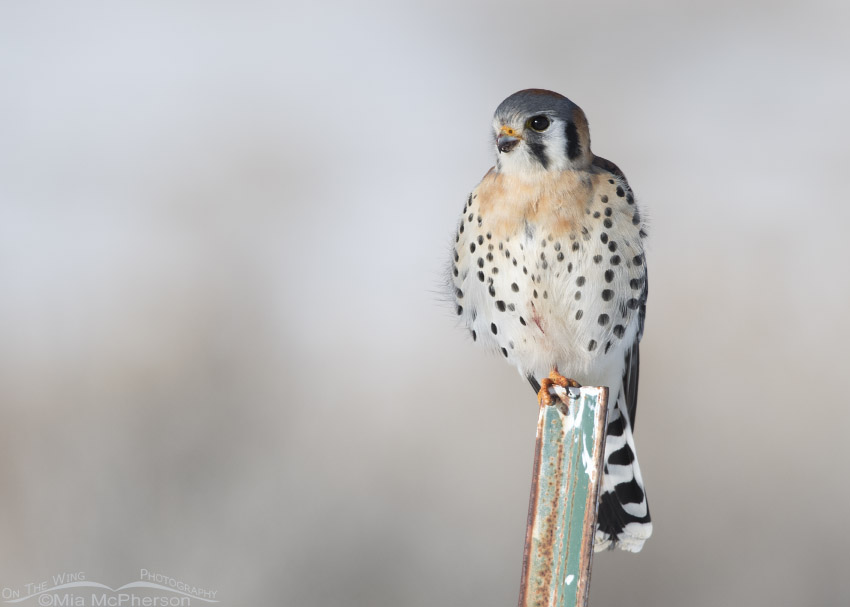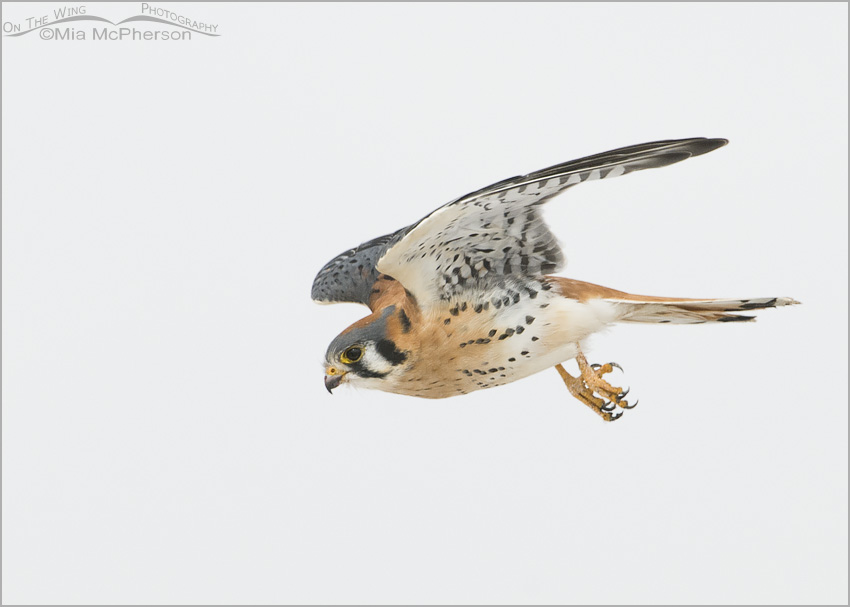 Pale-chested American Kestrel in Box Elder County – Nikon D500, f7.1, 1/2000, ISO 400, +0.7 EV, Nikkor 500mm VR with 1.4x TC, natural light, not baited
Pale-chested American Kestrel in Box Elder County – Nikon D500, f7.1, 1/2000, ISO 400, +0.7 EV, Nikkor 500mm VR with 1.4x TC, natural light, not baited
On my post about the Prairie Falcon with prey in Box Elder County, Utah I mentioned that I had seen some American Kestrels, I was only able to photograph one of the many kestrels I saw and I thought that he was beautiful if not somewhat unique. The male American Kestrel caught my eye immediately because he has such a pale chest that the spots on his chest stood out like tiny black jewels set in a field of snow white. The only other time I have seen an American Kestrel with a chest this pale was in Florida.
Birds of North America online (BNA) says this about Male American Kestrels:
Underparts pale buff to pinkish or orange; amount of streaking and spotting highly variable.
And further down their page on the appearance of American Kestrels:
Considerable disagreement on how much of the variability in kestrel plumage is age-related. Bent (Bent 1938b) suggested that males become less barred dorsally, less spotted ventrally, with a more rufous tail through successive molts; Parkes (Parkes 1955a) presented contrary evidence. It is not known with certainty whether tips of rectrices in males become successively lighter.
I saw the same American Kestrel yesterday and I could easily tell that it was him because of his pale chest. Unfortunately I wasn’t able to photograph him because he took off immediately.
 Male American Kestrel in flight on a very gray day – Nikon D200, f7.1, 1/1250, ISO 320, +0.7 EV, Nikkor 200-400mm VR with 1.4x TC at 328mm, natural light, not baited
Male American Kestrel in flight on a very gray day – Nikon D200, f7.1, 1/1250, ISO 320, +0.7 EV, Nikkor 200-400mm VR with 1.4x TC at 328mm, natural light, not baited
Most of the male American Kestrels I see here in northern Utah show more buff to orange coloration on their underparts than the male I photographed in Box Elder County. The male above was photographed at Farmington Bay WMA on a very gray, foggy morning and he shows more color in his underparts. I wanted to include this photo of a different male for comparison.
I love to notice the small things like variations in plumage when I am out photographing birds. It keeps me on my toes.
Life is good.
Mia
Click here to see more of my American Kestrel photos plus facts and information about this species.
Bent, A. C. 1938b. Life histories of North American Birds of Prey (Part 2). Orders Falconiformes and Strigiformes. Bull. U.S. Nat. Mus. (170):viii-482.
Parkes, K. C. 1955a. Notes on the molts and plumages of the Sparrow Hawk. Wilson Bull. no. 67:194-199.


Interesting notes on the plumage. That first image is a winner! I like the second one too.
Echoing Laura and Patty. Again. Of course.
Birds very in color as individuals . One of the interesting parts of rehab is all the variation in size and color within the same species that arrives.
Glad I didn’t miss these…they’re beauties! Especially liked the first, then I saw the second…wonderful flight shot!!! I agree with Laura…
Glad I didn’t miss these…they’re beauties! Especially liked the first, then I saw the second…wonderful flight shot!!! I agree with Laura…
Glad I didn’t miss these…they’re beauties! Especially liked the first, then I saw the second…wonderful flight shot!!! I agree with Laura…
Glad I didn’t miss these…they’re beauties! Especially liked the first, then I saw the second…wonderful flight shot!!! I agree with Laura…
Oh what a lovely boy! I’m continually delighted by the diversity in The Great Out There!